Homemade Tahini Recipe
This post may contain affiliate links. See my disclosure policy.
This easy homemade tahini recipe is so quick to make, takes just TWO ingredients, is less expensive than store-bought, and tastes WAY better! Make a double batch while you’re at it and store it in your fridge for several months to have on hand whenever you need it!
Use it make the best creamy Hummus Recipe or drizzle it over your homemade Falafel!
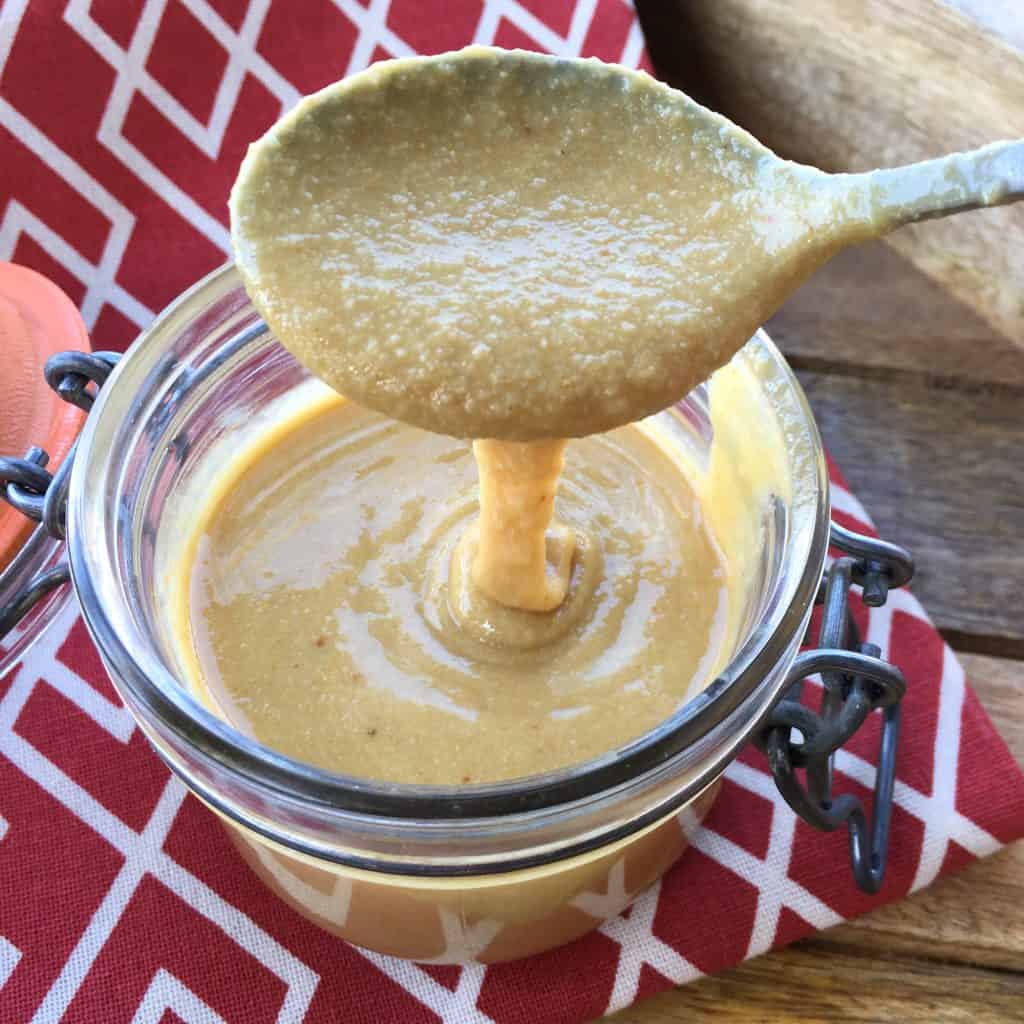
The scenario you may be familiar with: You’re really in the mood for some homemade hummus. Garbanzo beans? Check. Olive oil? Check. Lemons? Check. Garlic? Check. Tahini paste? Aw, dang it. Well don’t let that stop you again. Tahini is not only super simple to make, but homemade is cheaper than store-bought and it tastes better!
What is Tahini?
Tahini is a Middle Eastern condiment that is made from hulled sesame seeds that are toasted and then ground into a paste. It’s a popular staple in Middle Eastern, Greek, and East Asian cooking. It is served by itself as a condiment but also incorporated into a very wide variety of dishes, most famously a central ingredient in hummus.
Tahini Ingredients
To make tahini you only need two ingredients:
- Sesame seeds
- Olive Oil
You may be asking, “why do you need olive oil for tahini?” and that’s a good question because if you look at the ingredients of most commercially-sold tahini, it does not include olive oil. But there’s a good reason why homemade tahini needs the addition of olive oil and that’s because the oil from the sesame seeds cannot be fully extracted without specialized commercial equipment. If you put a bunch of sesame seeds in a regular blender you will get a heap dry ground sesame seeds. Another factor has to do with the freshness of the sesame seeds (the fresher the more oil) and unfortunately most of the sesame seeds available at the store have been sitting there, and in warehouses before that, for a long time. And so we add olive oil.
Shopping Tip: Buy sesame seeds in bulk. Buying the in tiny bags or cans with just a few ounces is expensive and they’re a better deal in bulk. You can buy sesame seeds in the bulk sections of some grocery stores or you can buy them online such as here.
Pro Tips
- Use hulled sesame seeds. Hulled sesame seeds have had their hard outer shell removed which 1) makes the tahini smoother and 2) less bitter tasting.
- Be careful toasting the sesame seeds. As soon as the sesame seeds start changing color watch very closely because they can scorch quickly which will make them bitter. Toast just until they’re golden.
- Use a high quality olive oil.
- Use a high-powered food processor or blender. A food processor like my mini-prep Cuisinart food processor (we’ve had ours for 17 years and it’s still going strong) does a good job and is ideal for smaller quantities like this but for a smoother tahini paste you can use a high-powered blender such as my Vitamix 5200 (we’ve been using it on average twice a day, every day, for the last 15 years and it’s a total workhorse).
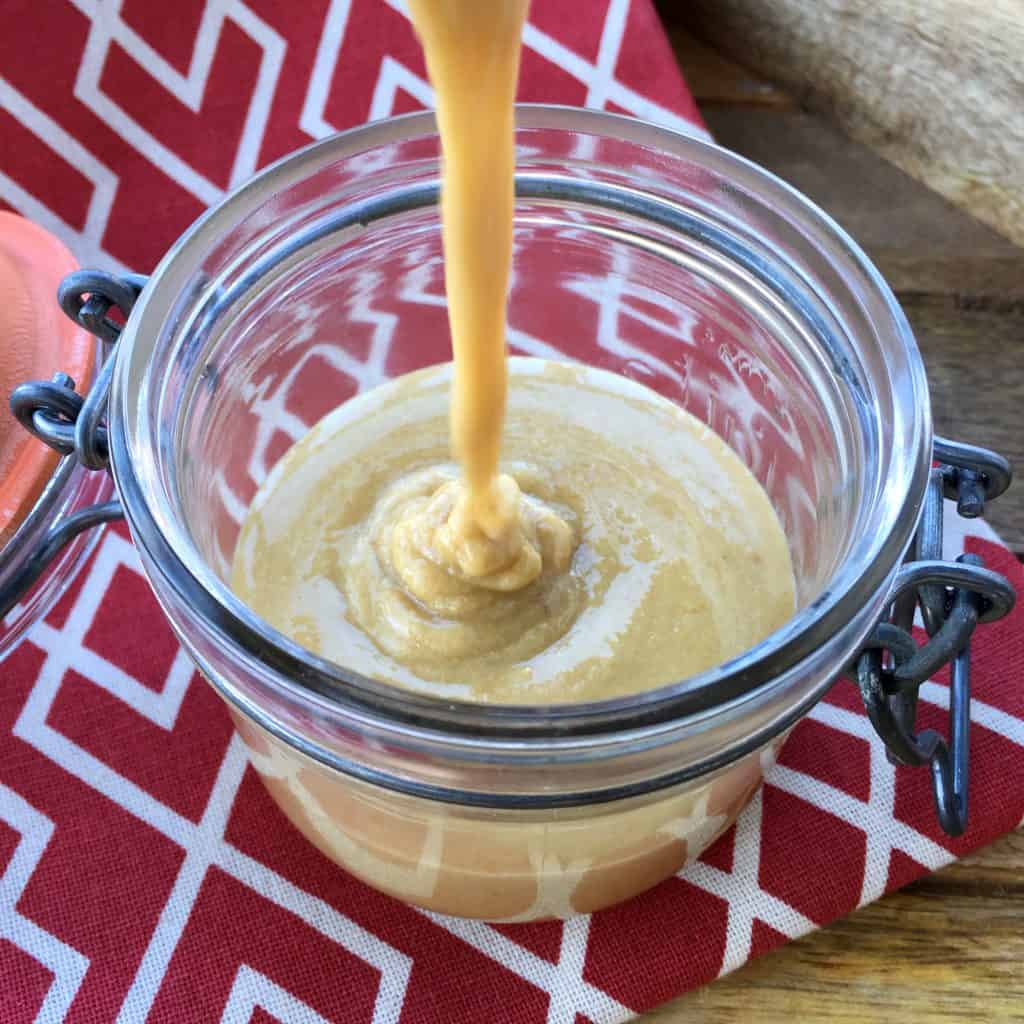
Tahini Recipe
This tahini recipe uses one cup of sesame seeds which will make about 3/4 cup tahini paste, depending on how much olive oil you use. How much olive oil you use will depend on how thick you want the paste. You’ll need at least 3 tablespoons of olive oil and possibly up to 1/3 cup. Note: If you’re using a high-powered blender like a Vitamix, you may need less oil than if you’re using a food processor.
Let’s get started!
Heat a clean, dry cast iron or heavy duty skillet over medium high heat and add the sesame seeds. Stir frequently until they begin to turn golden brown and then stir constantly. Be careful, sesame seeds burn very easily.
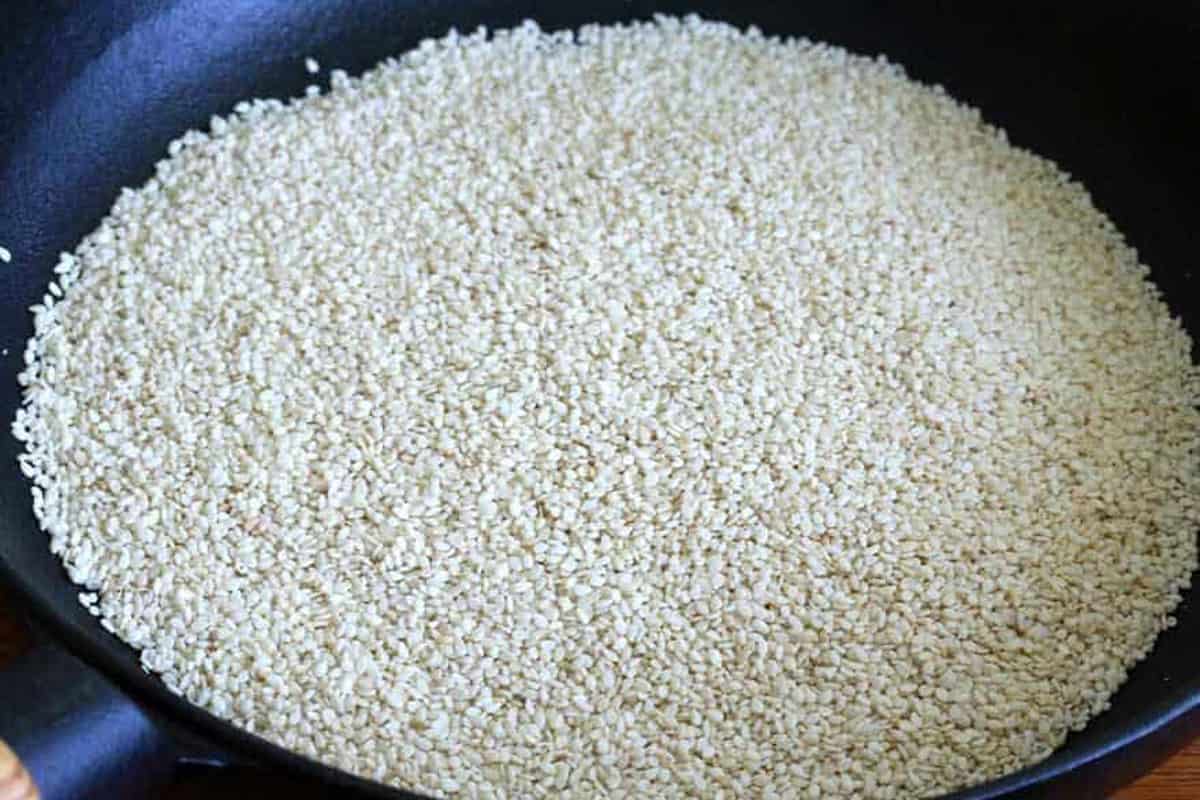
You definitely don’t want burnt sesame seeds (they taste awful!), but you do want them generously golden brown for optimal flavor.
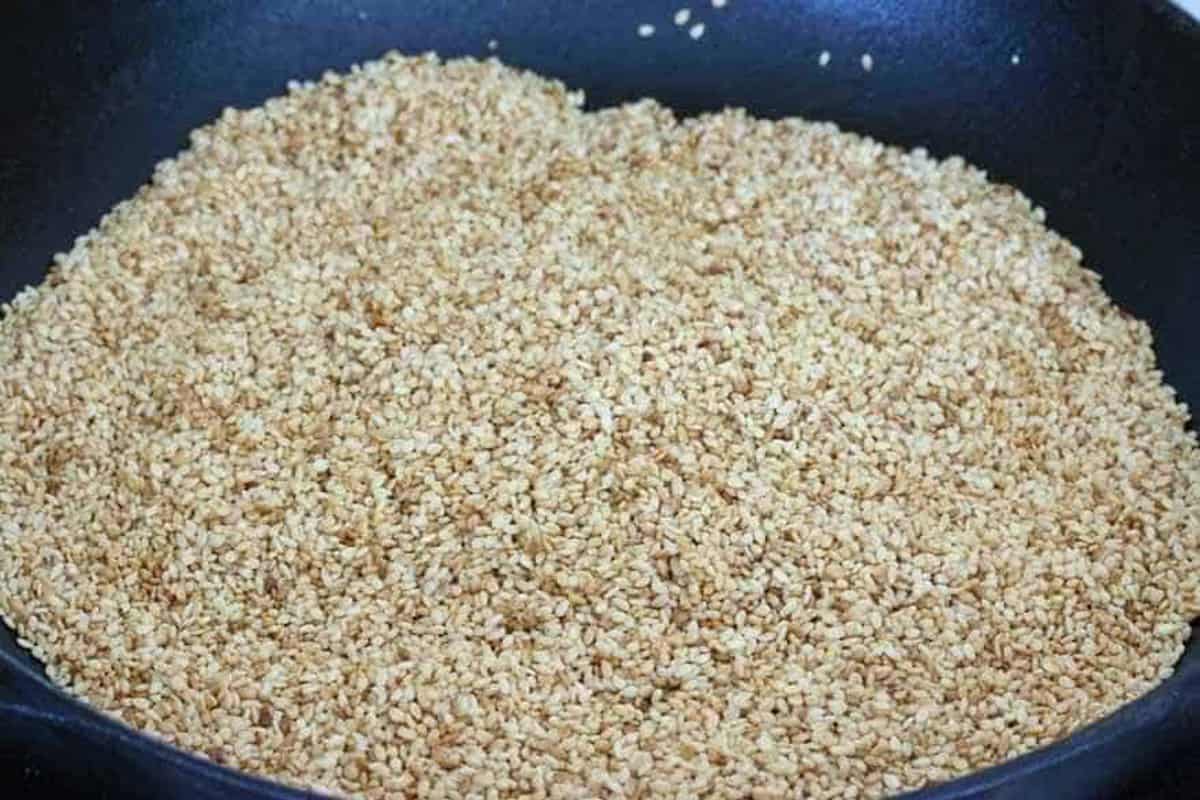
Once they’re toasted, let them cool a few minutes then add them to a food processor. I use and love Cuisinart’s mini prep food processor. With a 3-cup capacity it’s perfect for smaller jobs like this. We’ve had ours for over 15 years and it’s still going strong!
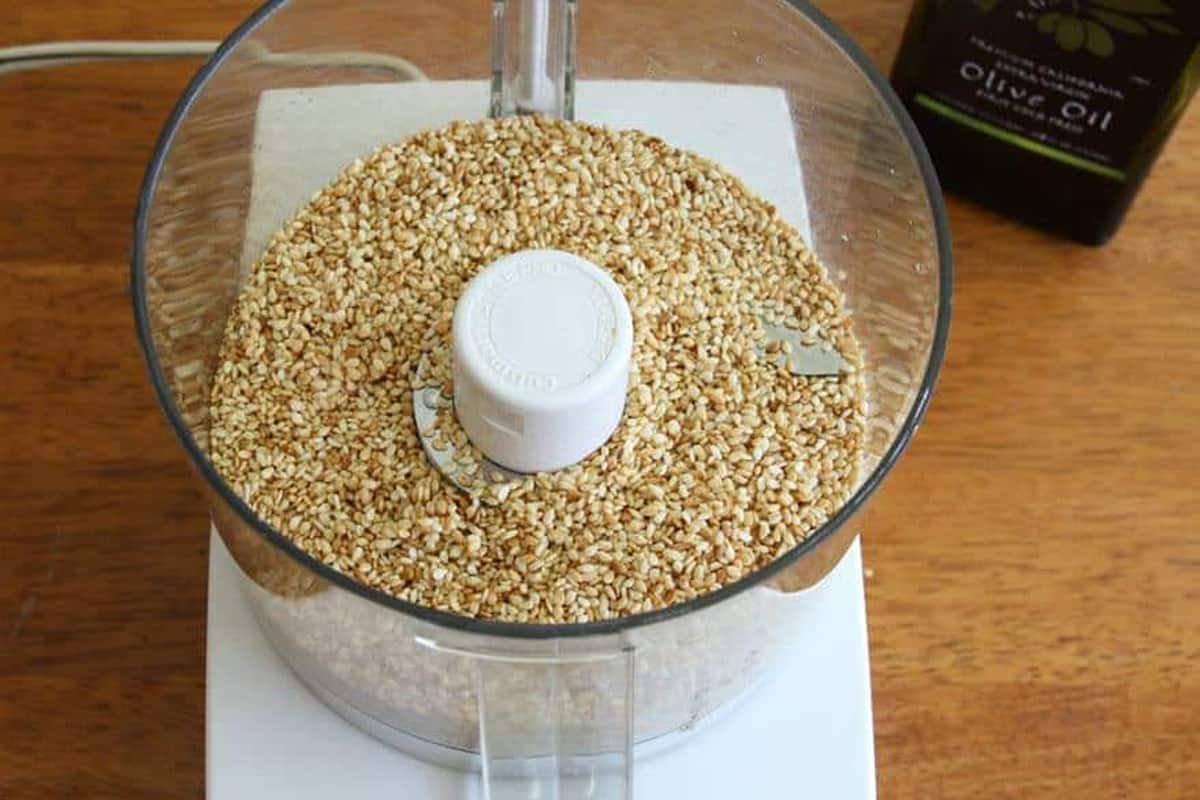
Start by adding 3 tablespoons of olive oil. Process the mixture into a paste, scraping down the sides. Add more olive oil until you reach the desired consistency. If you’re using it to make hummus, the paste should be fairly thickly “pourable” (like in the main recipe picture above).
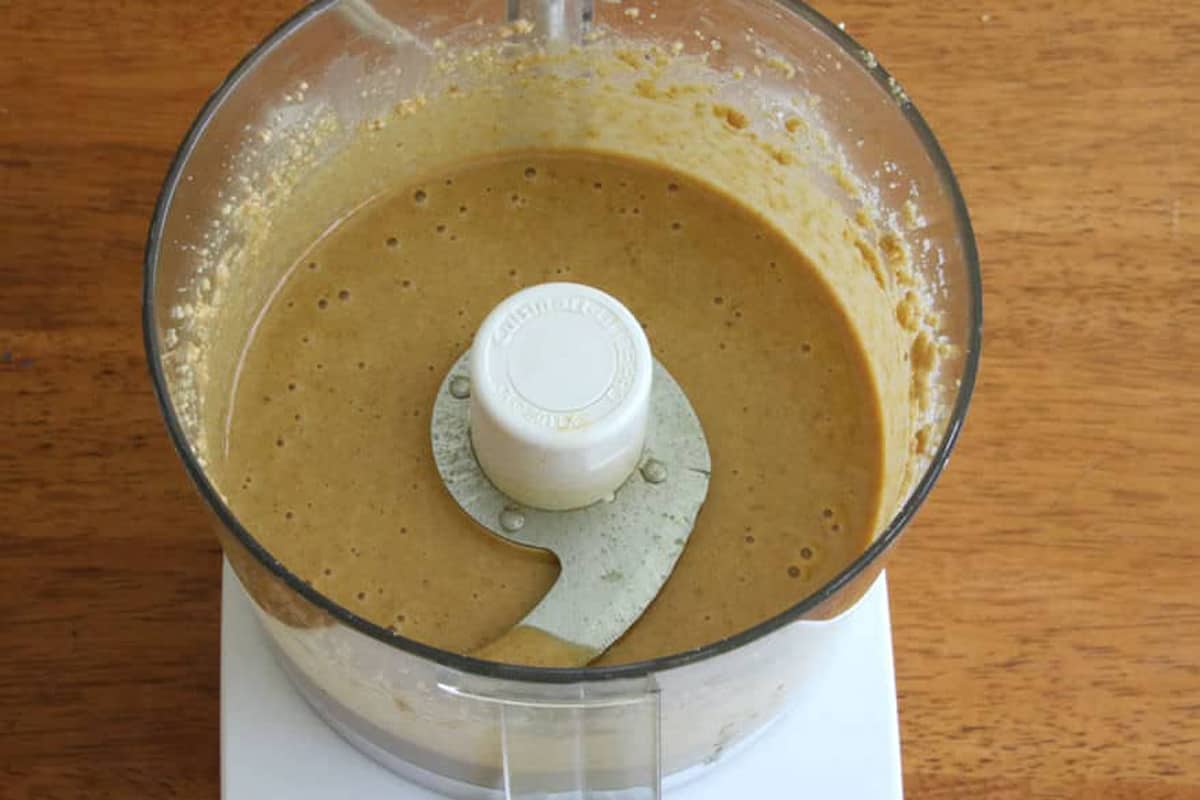
Storage & Freezing
Stored in the fridge in an airtight jar, tahini will keep for 1-2 months; potentially longer but for optimal freshness use it within that time frame. The oil will separate during storage, which is completely normal. Just give it a good stir before using.
Tahini can also be frozen for up to 3-4 months. You can freeze it in its jar, leaving some headspace because it may expand a little. For convenient smaller portions you can also divide it up in ice cube trays, freeze it, then put the frozen cubes in a freezer bag or container, and just take out what you need. Either way, let the tahini thaw slowly, ideally in the fridge overnight.
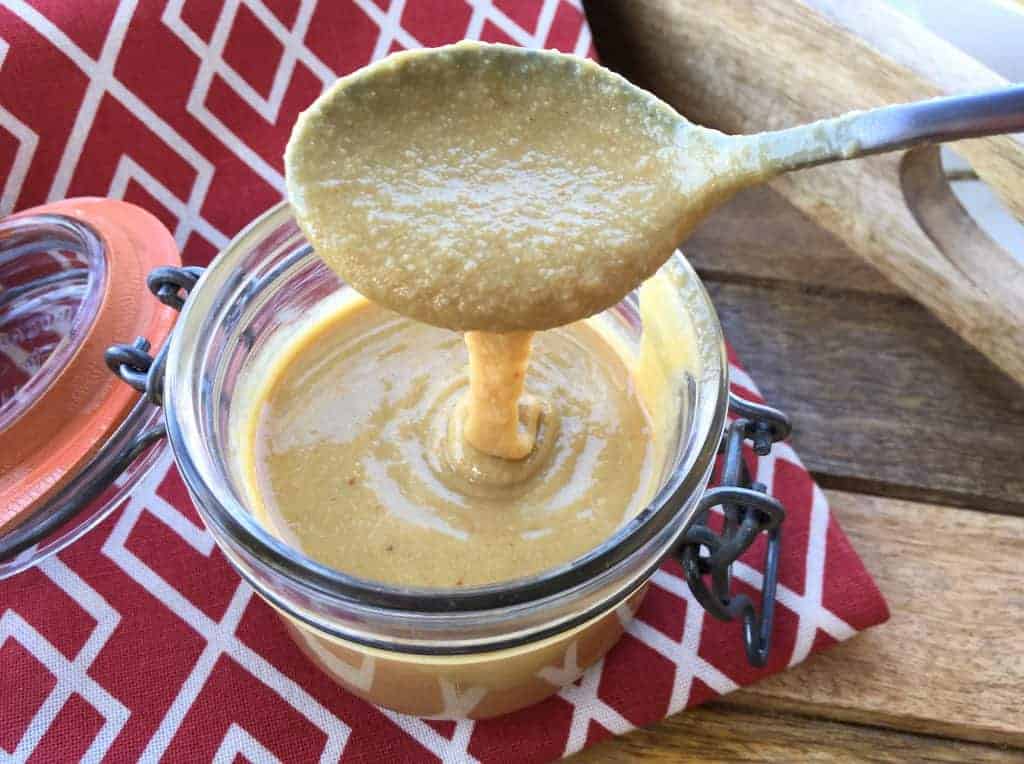
How To Use Taxhini
There are a number of delicious ways you can put your homemade to use. Here are just a few ideas:
- Hummus – its most popular use, check out our phenomenal Hummus Recipe.
- Baba Ganoush – like hummus, it’s wonderfully creamy and the tahini is a central star of the show.
- Tahin Pekmez – a popular dip in Turkey. It has the reputation as being the Turkish PBJ because it’s made with tahini (which has kind of a peanut-buttery taste) and grape molasses. Sound like a winning combination? It is!
- In Greece it’s a popular condiment in which to dip pita and souvlaki (grilled meat kabobs).
- In Israel it’s a staple topping for Falafel and shawarma. It’s also used to make halva-like treats.
- In East Asia it’s commonly used in noodle dishes.
- Throughout the Middle East it is used in sauces for meats and vegetables to enhance the flavor.
- It makes a really nice tahini salad dressing combined with lemon juice, olive oil, honey or maple syrup, garlic and salt.
- Drizzle it over your sandwiches, wraps, and lettuce wraps.
- Drizzle it over grilled meats and vegetables. It’s amazing on our Grilled Eggplant!
- Add it to your baked goods like cookies for a delicious twist!
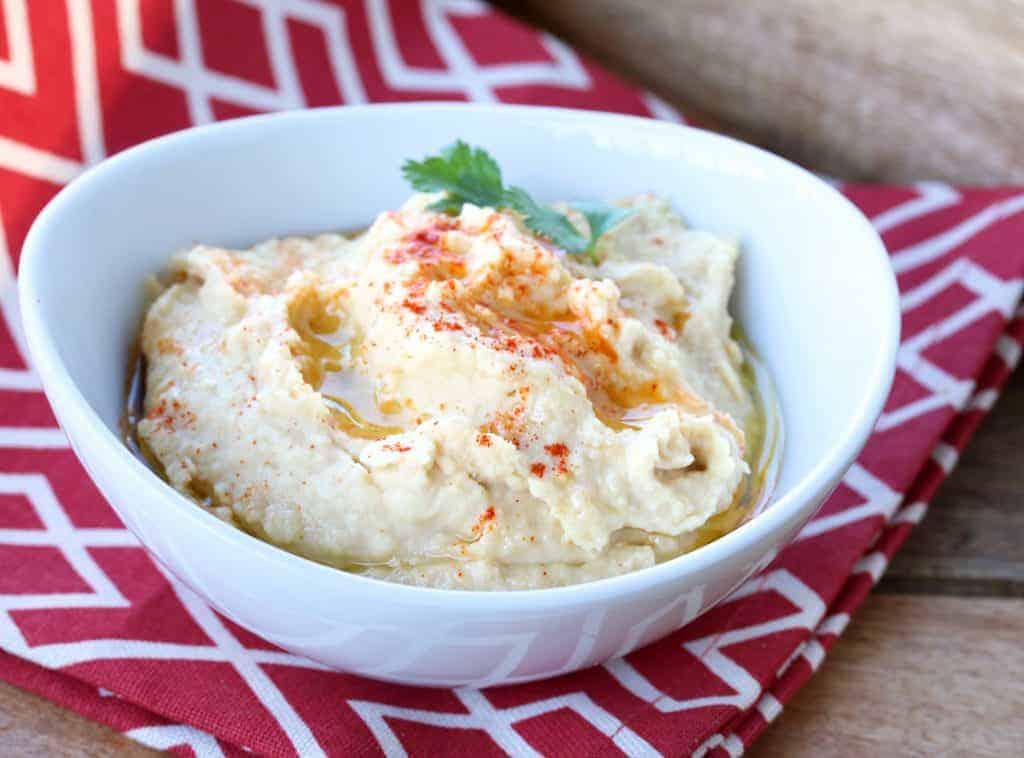
For more delicious homemade condiments try my:
- Tartar Sauce
- Yum Yum Sauce
- Bearnaise Sauce
- Black Bean Sauce
- Hoisin Sauce
- Big Mac Sauce
- Jerk Sauce
- Adobo Sauce
- Mignonette Sauce
- Aji Verde
- Enchilada Sauce
- Homemade Ketchup
- Ponzu Sauce
- Char Siu Sauce
- Romesco Sauce
- Eel Sauce
- Sweet Chili Sauce
- Remoulade
- Teriyaki Sauce
- Sweet and Sour Sauce
Save This Recipe
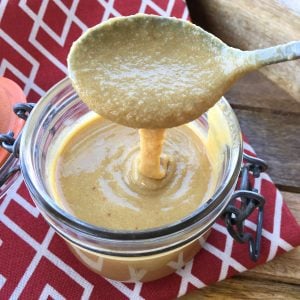
Homemade Tahini Recipe
Ingredients
- 1 cup hulled sesame seeds
- 3 tablespoons or more extra virgin olive oil ,see Note (see also blog post about why olive oil is added)
Instructions
- Heat a clean, dry cast iron or heavy duty skillet over medium high heat and add the sesame seeds. Stir frequently until they begin to turn golden brown and then stir constantly. Be careful, sesame seeds burn very easily.
- Once they're toasted, let them cool a few minutes then add them to a food processor. Start by adding 3 tablespoons of olive oil. Process the mixture into a paste, scraping down the sides. Add more olive oil until you reach the desired consistency (*see Note)
- Store the tahini in an airtight jar in the fridge and it will last for several months. Stir it throughly before you put it in the fridge because once it's chilled it's difficult to stir. This makes a little less than 3/4 cup tahini paste, depending on how much olive oil you use.
Notes
Nutrition
Originally published on The Daring Gourmet May 2017



















Thanks it’s good when you have trouble buying something you finds easy to make your,it’s a good feeling
It sure is, Mark! Especially when it’s not only cheaper to make yourself but tastes even better than store-bought!
I get bulk sesame seeds at a mid-eastern specialty store for 2.99 a pound
Hello! So I tried to make Tahini paste with Sesame oil, it was AMAZING! But, peanut oil is cheaper! Friends, anyone needs tips for Lebanese cooking or infos, I love cooking, I feed my friends and give food to people constantly! My joy is to cook and watch people smiling while eating! Thank you!
Hi Zovik, I’m happy you enjoyed it and thanks for your feedback!
Hey could you give me a nice hummus recipe
Here you go, Shahbano: http://www.daringgourmet.com/creamy-hummus-with-homemade-tahini-paste/.
Here is also a variation, roasted pumpkin hummus: http://www.daringgourmet.com/roasted-pumpkin-hummus/
Thank you for sharing! Little suggestion from a Lebanese lady, Olive oil is delicious and I use it in gallons. But, for the Tahini paste, using peanut oil it’s how to be done! So, the texture of Hummus will not change, stays ETHNIC . I use tahini so much, I make Hummus, Mutabbal etc…. Try the recipe and let me know! Olive oil will go on top of the Hummus as a decoration and dipping purpose. I sprinkle cumin, paprika on the sides of my Hummus and I add my home made hot red pepper paste in the center, OLive oil on top, my guests stir it all together to start eating , I get little edgy :) and I correct them how to eat it! They laugh! Thank you!
Hi Zovik! Thank you for your feedback – I really like the addition of the red pepper paste in the center. It’s interesting you mention that. My husband and I just got back from a trip to Los Angeles and I found a wonderful Lebanese bakery there. We arrived at the perfect time to find find the breads freshly baked and still hot. We tried several savory Lebanese pastries – filled with spicy meat and cheese. We also had two kinds of flatbread – one sprinkled with olive oil and za’atar (one of my favorite spice blends, I make my own) and another smothered with red pepper paste, dotted with black olives, and sprinkled with cheese. They were all delicious. I was able to chat with the owners for a while about Lebanese and Middle Eastern food. Next door was also a Middle Eastern grocery store. I wanted to pick up a bottle of that red pepper paste, but we had only brought carry-on luggage so we wouldn’t have been able to take it on the plane. But that’s okay, because I want to make some homemade anyway :) I was so thrilled to have found that bakery and grocery store just outside of LA. Such friendly people, a very well-stocked grocery store, and wonderful baked goods. Next time we go to LA, we’ll be stopping there again!
Hi, can I use vegetable oil instead of olive oil?
Hi Reen, yes you can!
I made this for the first time and used it to make your hummus recipe. It was amazing!! It’s honestly the best hummus I’ve ever had and I’m never buying tahini paste again. This has so much more flavor. Thanks so much for this recipe. LOVE your site! Patricia
That’s wonderful, Patricia, I’m so pleased you enjoyed it! The homemade tahini really does make a big difference in the flavor of the hummus. I’m never buying tahini again!
Made it!! I used it to make hummus – SO good! Thank you!!!!
You’re so welcome, Brandy! I love how easy it is to make and how convenient when you need it last minute.
Kimberly, I am so glad you posted this. I had been planning to make tahini, but did not know it would require the addition of oil. All the nut butters I make don’t require anything beyond the nuts. I guess, given the fact of the existence of sesame oil, I’m surprised that there is any need to add oil to the seeds.
Hi Susan, sesame seeds most definitely have their own oil content, but to achieve the smooth consistency of tahini paste, extra oil is added. You can omit it if you prefer (for a thick/rough consistency) but if you’re using it to make Middle Eastern dips, like hummus, you’ll have to make up for it by adding even more oil later, so it’s just as well to add it to the paste in the first place.
On a side note, you can also use sesame oil instead of olive oil but be sure it’s raw and not toasted sesame oil or you’re Middle Eastern dishes will taste more Chinese :) Olive oil is what’s most commonly used though.
Thanks, Kimberly. I will follow your advice. It would be a pleasure to make my own, because I’ll bet it would be much easier to stir than the stuff in a can (I think the brand was Aladdin) I used to buy at a Lebanese grocery in Los Angeles, many, many years ago.
Sure thing, Susan. If you do try and make it without adding the extra oil and come out with a successful consistency, let me know. In olden days they would traditionally grind the roasted sesame seeds with a pestle and mortar and as far as I’m aware, wouldn’t add any extra oil. I think the key is probably super fresh sesame seeds. The ones we buy at the store have been sitting on the shelves for so long that their oil content has been largely dried out. So even “traditional” tahini recipes today call for extra oil.